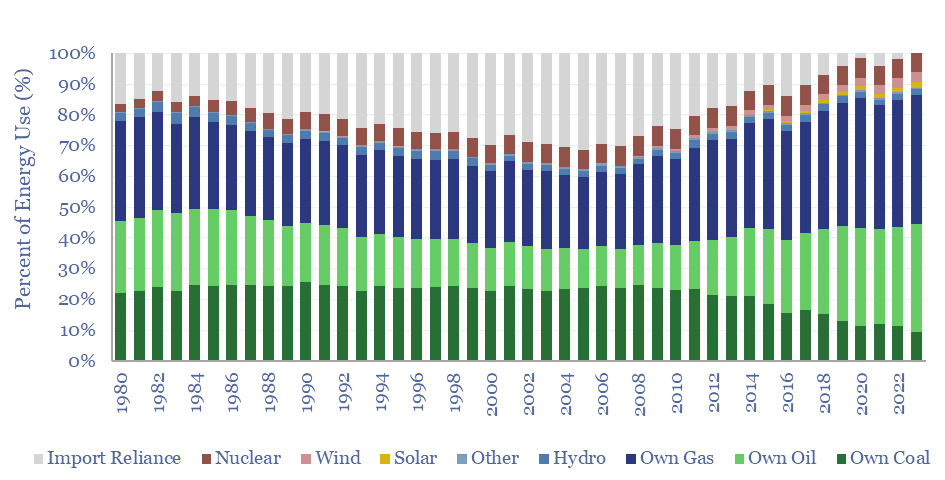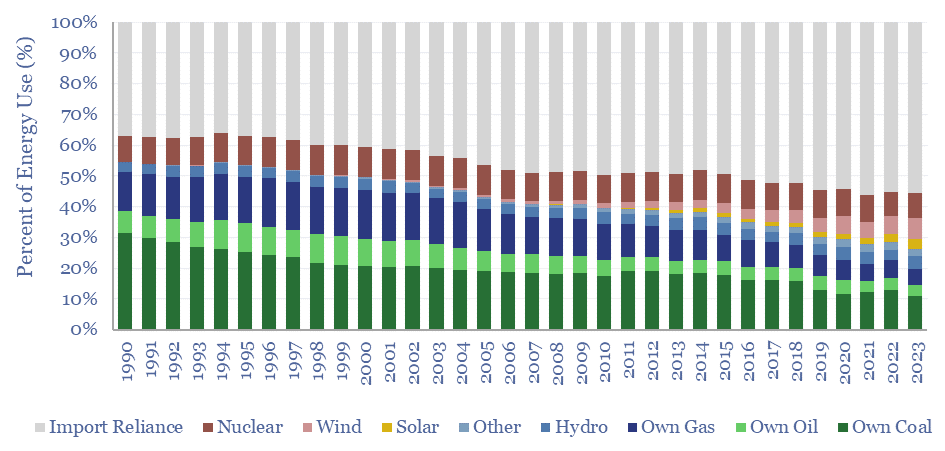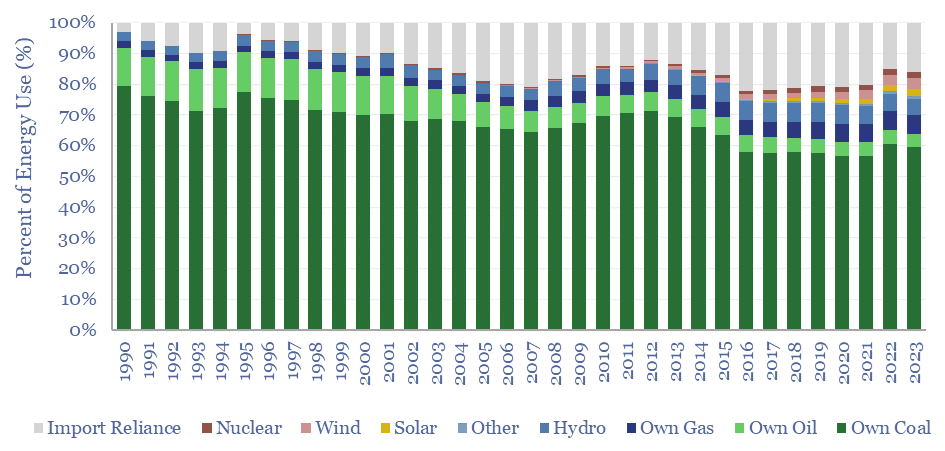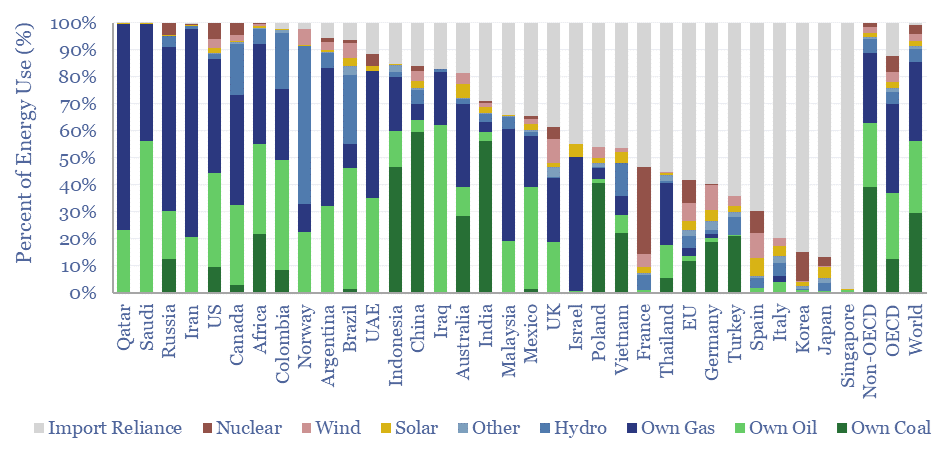This data-file tabulates energy self-sufficiency by country, over time, across 30 of the largest economies in the world. Among this sample, the median country generates 70% of its energy domestically, and is reliant on imports for 30% of the remainder. Energy self-sufficiency varies vastly by country.
Energy self-sufficiency can be estimated by on a gross basis by dividing total primary energy production by total primary energy consumption. Leading countries include Norway (6x more energy produced than consumed), Qatar (4x), Iraq (3x), Australia (3x), Saudi Arabia (2x), Indonesia (2x), Russia (1.7x), Canada (1.7x).
Energy self-sufficiency can also be estimated on a net basis, by summing up the share of total useful energy consumption, by resource, that is met domestically versus from import reliance. Most import-reliant countries include Singapore (99%), Japan (87%), South Korea (85%), Italy (80%), Spain (70%) and Turkey (65%).
Energy self-sufficiency in the US declined from 1982 to 2005, at which point, the US was importing over 30% of its total energy needs. Amazingly, in the past twenty years since 2005, the US has ramped up its oil production by 3x, its gas production by 2x and now also produces 5% of its energy from new energies such as wind and solar. This means the US produces 1.1x more primary energy than it needs. And, for the first time in 50-years, the US has no net energy import reliance (chart below).

Some commentators have noted a streak towards isolationism among recent US political candidates. The reality is that the US is less reliant on a stable world for its energy security than it was 20-30 years ago.
Energy self-sufficiency in Europe, on the other hand, has been a disaster, and dangerous for geopolitical security. Europe was 65% self-sufficient for its own energy supplies, 30-years ago, in 1994. Today it is 45% self-sufficient in its energy supplies (chart below).
Wind and solar do provide 7% and 3% of Europe’s energy needs, respectively. However, domestic production of gas, oil and coal have all fallen by 60-70% in the past 30-years, and countries such as Germany have enacted kamikaze energy policies such as shutting down their nuclear industries (which formerly supplied 9% of Germany’s energy needs).

Energy self-sufficiency in China is a major policy goal. Import reliance peaked in 2006, at 20% of China’s energy needs. China’s need to import oil is the largest import reliance in our entire data-set. Hence China has been electrifying its vehicle fleet faster than any other nation, while also ramping up coal production and renewables for electricity.

The full data-file shows our calculations, for transparency, with data into the energy self-sufficiency by country in Argentina, Australia, Brazil, Canada, China, Colombia, the EU, France, Germany, India, Indonesia, Iran, Iraq, Israel, Italy, Japan, Malaysia, Mexico, Norway, Poland, Qatar, Russia, Saudi Arabia, Singapore, South Korea, Spain, Thailand, Turkey, UAE, the United Kingdom, the US, and Vietnam. Underlying data are from the Energy Institute.
